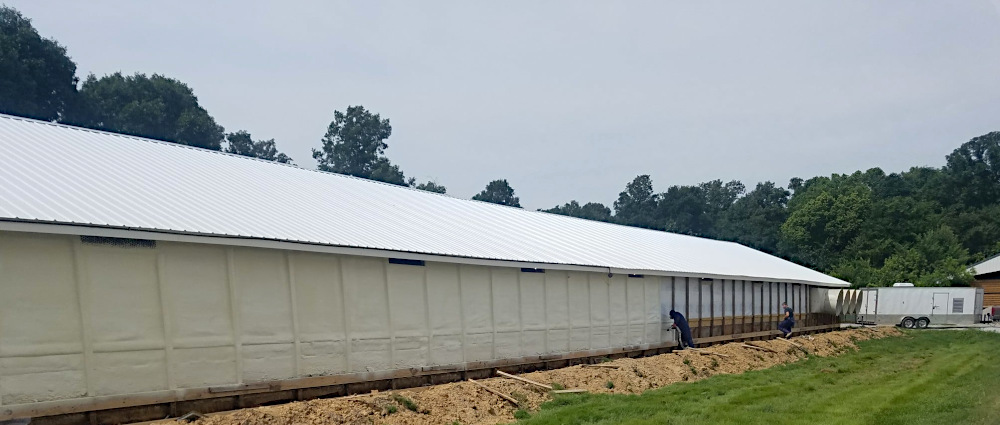The Benefits of Spray Foam Insulation in Metal Buildings
Metal buildings are a popular choice for workshops, storage units, barns, and commercial facilities thanks to their strength, affordability, and speed of construction. But there’s one persistent challenge metal structures face: condensation.
When warm, moist air inside a building comes into contact with the cooler metal surfaces—especially during seasonal temperature swings—condensation forms. Over time, this moisture can lead to rust, mold, warped materials, and even structural damage. That’s where spray foam insulation comes in. More than just an insulator, spray foam acts as a barrier against moisture, offering a one-two punch of protection and performance.
The Moisture Problem: Why Metal Buildings Are at Risk
Condensation might seem like a minor issue at first—just a few droplets here and there—but unchecked, it can wreak havoc on a building:
- Corrosion of metal panels and fasteners
- Mold growth, which can affect air quality and stored materials
- Warping or rot of any wood components (common in hybrid structures)
- Damage to insulation and equipment
Standard fiberglass insulation can absorb moisture and lose effectiveness over time. Worse, it can trap moisture against the metal surface, speeding up rust and decay. That’s where spray foam shines.
Spray Foam: The Moisture-Busting Solution
Spray foam insulation, especially closed-cell varieties, bonds directly to the interior surface of a metal building. This seamless layer does three critical things:
- Air Sealing – It eliminates drafts and air leaks that contribute to humidity.
- Thermal Insulation – It reduces temperature fluctuations that lead to condensation.
- Moisture Barrier – It prevents water vapor from condensing on the metal in the first place.
By eliminating the conditions that allow condensation to form, spray foam transforms a metal building from a potential rust bucket into a dry, climate-controlled space.
Long-Term Savings: Cost-Effective and Durable
While spray foam insulation typically costs more up front than traditional batts or panels, it’s an investment that pays off in several key ways:
- Lower Maintenance Costs
No more battling rust, mold, or insulation degradation. Spray foam extends the life of your building and the equipment inside it. - Reduced Energy Bills
The air sealing and high R-value (thermal resistance) of spray foam means you’ll spend less on heating and cooling—often up to 30–50% savings annually. - Preserves Structural Integrity
Preventing corrosion protects the metal shell and framework, helping the building last decades longer. - Improved Property Value
A well-insulated, condensation-free structure is more appealing to buyers, tenants, and lenders.
Ideal for New and Existing Buildings
Spray foam can be applied to new construction or retrofitted into older buildings. In fact, it’s often a go-to upgrade for farmers, manufacturers, and property owners tired of battling moisture issues with outdated insulation systems.
And thanks to its long life span—often 30 years or more—spray foam is a one-time investment that provides ongoing benefits for the life of your building.
Final Thoughts: Protect What You Build
Whether you’re storing equipment, housing livestock, or running a business, the last thing you want is a building compromised by moisture. Spray foam insulation offers a high-performance, cost-effective solution that protects your metal building from the inside out.
Dry, energy-efficient, and built to last—that’s the power of spray foam.

